Gallery
- El maíz (1996), painted steel, 9.6 x 1 meters, Washington D.C.
- El maíz (1996), painted aluminium, Sonsón
- El maíz (1996), painted aluminium, Sonsón
El Maiz is a series of modern abstract sculptures by Édgar Negret as an interpretation of the maize, or corn. The sculptures, which are all in the same design and production year, vary in color, material, and size. The sculptures are more commonly found in yellow which is also the most common color for the corn crop; however, some were painted purple and red which are also natural colors in which the maize crop can be found in.

Edgar Degas was a French Impressionist artist famous for his pastel drawings and oil paintings.
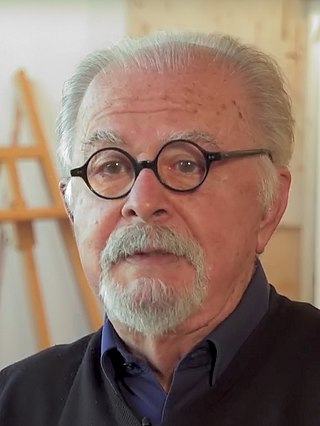
Fernando Botero Angulo was a Colombian figurative artist and sculptor. His signature style, also known as "Boterismo", depicts people and figures in large, exaggerated volume, which can represent political criticism or humor, depending on the piece. He was considered the most recognized and quoted artist from Latin America in his lifetime, and his art can be found in highly visible places around the world, such as Park Avenue in New York City and the Champs-Élysées in Paris, at different times.

Chicha is a fermented (alcoholic) or non-fermented beverage of Latin America, emerging from the Andes and Amazonia regions. In both the pre- and post-Spanish conquest periods, corn beer made from a variety of maize landraces has been the most common form of chicha. However, chicha is also made from a variety of other cultigens and wild plants, including, among others, quinoa, kañiwa, peanut, manioc, palm fruit, rice, potato, oca, and chañar. There are many regional variations of chicha. In the Inca Empire, chicha had ceremonial and ritual uses.
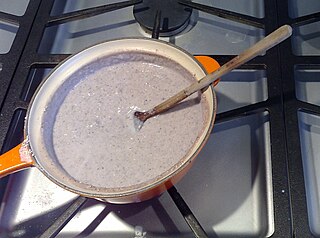
Atole, also known as atolli, atol and atol de elote, is a traditional hot masa-based beverage of Mexican origin. Atole can have different flavors added, such as vanilla, cinnamon, and guava. Chocolate atole is known as champurrado or simply atole. It typically accompanies tamales and is very popular during Day of the Dead and Las Posadas.

Arepa is a type of flatbread made of ground maize dough stuffed with a filling, eaten in northern parts of South America since pre-Columbian times, and notable primarily in the cuisine of Colombia and Venezuela, but also present in Bolivia, Ecuador, and Central America.

Sonsón is a municipality in the Colombian department of Antioquia. Sonsón is located in Eastern Antioquia. It is one of the seats of the Roman Catholic Diocese of Sonsón–Rionegro. Sonsón celebrates "Las Fiestas Del Maíz"- during the month of August, being the most traditional, historical and representative festival in western Colombia. The population was estimated to be 33,598 in 2020.
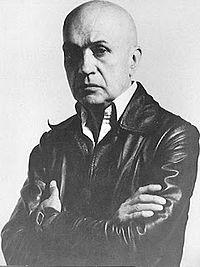
Édgar Negret Dueñas was a Colombian abstract sculptor.
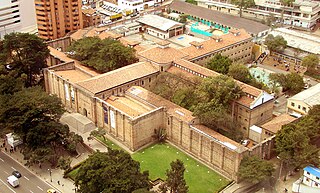
The National Museum of Colombia is the National Museum of Colombia housing collections on its history, art, culture. Located in Bogotá downtown, is the biggest and oldest museum in Colombia. The National Museum of Colombia is a dependency of the Colombian Ministry of Culture.

The Casa de Nariño, literally the House of Nariño, is the official residence and principal workplace of the President of Colombia. It houses the main office of the executive branch and is located in the capital city of Bogotá, Colombia. It was dedicated in 1908 after being constructed on the site of the house where Antonio Nariño was born. The design was made by architects Gastón Lelarge, a French-born former pupil of Charles Garnier, and Julián Lombana.

Colombian art has 3500 years of history and covers a wide range of media and styles ranging from Spanish Baroque devotional painting to Quimbaya gold craftwork to the "lyrical americanism" of painter Alejandro Obregón (1920–1992). Perhaps the most internationally acclaimed Colombian artist is painter and sculptor Fernando Botero (1932–2023).

Leonardo Nierman Mendelejis was a Mexican artist mostly known for his painting and sculpture. He at first wanted to be a violinist, but gave it up after twenty years when he compared a recording of his playing with that of Yehudi Menuhin. However, his musical training has been a major influence on his painting and sculpture, reproducing movement and harmony as Nierman sees similarities between the two disciplines. Nierman had had exhibitions in Mexico and abroad and over sixty recognitions of his work, half of which are from outside Mexico. His work is abstract but still with discernible images from nature such as birds, water, lightning and more. His paintings are in pure colors while his sculptures are generally of metal, often silver-toned.

Maize, also known as corn in North American English, is a tall stout grass that produces cereal grain. It was domesticated by indigenous peoples in southern Mexico about 9,000 years ago from wild teosinte. Native Americans planted it alongside beans and squashes in the Three Sisters polyculture. The leafy stalk of the plant gives rise to male inflorescences or tassels which produce pollen, and female inflorescences called ears. The ears yield grain, known as kernels or seeds. In modern commercial varieties, these are usually yellow or white; other varieties can be of many colors.

Eduardo Úrculo, was a Spanish pop artist who also worked in other art movements, including Expressionism and Neo-Cubism. Both painter and sculptor, he is notable for his portrayals of luggage, the gentleman's hat, and the female bottom. With El Equipo Crónica, formed by the artists Manolo Valdés and Rafael Solbes, Úrculo is considered one of the drivers of pop art in Spain.
The varieties of Ecuadorian maize are the repository of a rich farming and cooking tradition.

Blue corn is a group of several closely related varieties of flint corn grown in Mexico, the Southwestern United States, and the Southeastern United States. It is one of the main types of corn used for the traditional Southern and Central Mexican food known as tlacoyo.

Marta Traba Taín was an art critic and writer known for her contributions to Latin American art and literature.
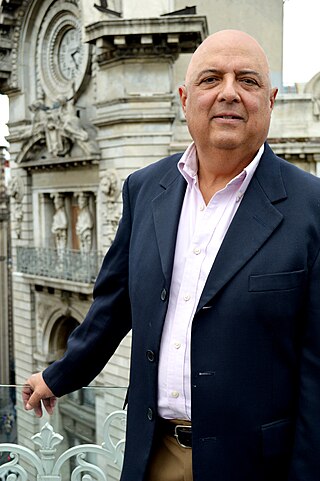
Pablo Kubli is a Mexican sculptor specializing in metals, a member of Mexico’s Salón de la Plástica Mexicana. He initially trained in law and public administration in college, completing bachelor’s and master’s in visual arts later in life. He has one doctorate from the Universidad Politecnica de Valencia, Spain. He's been exhibiting individually since 1991, with most of his works consisting of steel plates and other pieces assembled with nuts and bolts with both organic and geometric forms.

The Museo Botero, also known as the Botero Museum, is an art museum located in La Candelaria neighborhood of Bogotá, Colombia. It houses mostly works by Colombian artist Fernando Botero, however it also includes artwork by other international artist that were of Botero's own private art collection.

Hernando Tejada Sáenz, was a Colombian painter and sculptor. His most well-known sculpture, El Gato del Río, is a famous landmark of Cali, Colombia.

Eduardo Ramírez Villamizar was a Colombian painter and sculptor. He is considered a pioneer of abstract, minimalist, and Constructivist art in Colombia, and in Latin America more broadly.